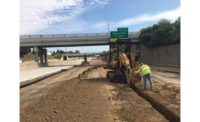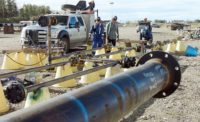Older workers, those ages 55 and up, are often seen as top assets in a contractor’s labor pool. They’re experienced and reliable—natural jobsite leaders, both by title and example. And, with skilled labor in short supply, contracting firms are understandably eager to keep these workers happy, healthy and on the payroll as long as possible.
“As a whole, Baby Boomers’ work ethic is more focused on the company,” observes Dan Ryan, a Nashville, Tenn.-area search consultant. Generation X and Millennial workers, on the other hand, have come to place greater value on work-life balance. “They witnessed some of downsides of the ‘hard work’ ethic in their own lives with older siblings or parents sacrificing family time,” Ryan adds.
“Older workers are probably the safer workers because that’s how they’ve lasted so long,” says Mark Hansen, a risk consultant with Contek Solutions LLC. “They do things a certain way because they’ve seen all the ways to do things. They know what works, what’s safest and what’s most efficient.”
Workers aged 45-64 made up nearly 40% of the construction workforce in 2015, according to the most recent data from Center for Construction Research and Training (CPWR). While the average age for all workers is edging higher as a result of the large numbers of Baby Boomers still in the workforce, the average age of construction workers—now approaching 43—has risen at a faster pace in recent years.
“It used to be that a sign of a good day at work was a sore back.”
– Joe Garza, Regional Safety Manager, DPR Construction
Although many older workers may have the desire, or in some cases the economic need, to put retirement on hold, their bodies are not always so accommodating. Decades of physically demanding activity take their toll on joints and muscles that naturally lose strength, endurance and flexibility with age, according to the Mayo Clinic. Balance and coordination can be compromised as a result, compounding other age-related effects such as diminished eyesight, hearing, memory recall and reaction time.
Research on workplace injuries has consistently shown older workers to be less vulnerable to injury. But that trend could be changing. A recent National Council on Compensation Insurance (NCCI) study found that the frequency of workplace injuries fell by one-third during the period 2006-2017, with construction experiencing the largest percentage decline of any industry (albeit still with the highest incidence rate).
However, the decline was slower among older workers than among their younger counterparts, marking a distinct change from 10 years ago. The study also found that older workers have a higher proportion of injuries from “falls, slips and trips” and a lower proportion of injuries from “contact with objects or equipment.”
Still, even if a potential jobsite injury ends up as a “near-miss,” not everyone may own up to age-related vulnerabilities.
“Many workers fear that saying something will cost them their jobs,” observes Rosemary Sokas, a professor of Human Science at Georgetown University and a frequent CPWR study collaborator. She says that fear is greater among Latino and immigrant workers who may have no safety net. “They are getting older too, with an average age just one year less that of all construction workers,” she adds.
Workplace safety author and blogger Phil La Duke says that facing up to age-related limitations “becomes a test of your values and worth.” Self-identification with a trade is so strong, he adds, many workers simply can’t imagine themselves doing anything else.
As a result, La Duke says, “Too many of them work longer than their bodies allow. That can put others in danger, as well as themselves.”
Heightened Awareness
Sokas says contractors with a comprehensive approach to jobsite safety have a head-start on addressing potential age-related risks.
“If you make a workplace safer for everyone, you’re going to make it safer for older workers too,” she says. “Planning for specific projects is the key.”
For example, frequent breaks for water and shade are particularly important for older workers, since heat tolerance declines with age. Similarly, wellness programs that include organized stretching during the day can reduce vulnerability to musculoskeletal injuries.
Redwood City, Calif.-based DPR Construction has focused on jobsite logistics, such as providing well-lit work areas and eliminating ladders wherever possible. “We encourage sites to find ways for employees to ‘walk to work’ rather than deal with the effort and fatigue of climbing ladders,” says DPR regional safety manager Joe Garza.
Ergonomics also is an emphasis when it comes to tools, changing what Garza says is the long-standing “brute-force mentality” associated with construction work. “It used to be that a sign of a good day at work was a sore back,” he says. “We’d rather it be our workers’ ability to do other things without pain when they get home.”
Ryan Abbott, a senior vice president with Sundt Construction, Tempe, Ariz., says his firm has improved its understanding of the chemical properties of construction materials. “Using plasticizers makes concrete easier to mix and move, and we have more accurate material quantities,” Abbott says.
Making greater use of off-site prefabrication has helped as well, affording older trade workers opportunities to take advantage of a more comfortable, less-strenuous environment, while “younger workers typically handle the more difficult on-site assembly work,” he adds.
Sundt hopes to gain additional insights to take the strain out of jobsite activities, via a new collaborative study with Arizona State University. In the initial phase, two eight-person work crews were fitted with sensors to study stress, posture and heart rate as they performed tasks using different tools.
“We’ve already seen how things like operating drills at certain heights can make a difference,” Abbott says, adding that the company plans to expand the study to include other tasks.
Transitioning older workers to roles that allow them to mentor and train younger peers can help contractors utilize their experience without overtaxing their physical limitations.
“Those with different skill sets can become safety trainers, do CADD and BIM work or oversee site set-up,” says CPWR executive director Chris Trahan Cain. “However, there are not enough roles of this type to capture all aging workers. And contractors need to be wary of potential age-discrimination issues.”
Garza says many of DPR’s senior tradespeople act as “craft ambassadors,” a role that allows them to do gradually less hands-on work in favor of mentoring.
“It’s not a sudden change, as they still get to work,” he says. “They pick the terms on how to retire.”
Change and its associated uncertainty may well be the biggest issue contractors must overcome in ensuring both the safety and productivity of older workers. La Duke believes the best way to address that stumbling block is by changing long-standing attitudes. Those range from construction’s machismo culture to the notion that workers can do only one thing one way, until they can do it no more.
“Their assumed reluctance to embrace new technology is a myth,” La Duke asserts. “They may not take to a computer, but they’ll jump on a new tool.”
Offering greater work schedule flexibility may well be the most valuable accommodation a contractor can offer older workers. Garza recalls how a valued laborer in his mid-60s was contemplating retirement, his body unable to keep up with the physical demands of a full work week. However, his supervisors agreed to let him cut back to 32 hours a week and adjust his arrival and departure times as needed.
“This allows him to work another two years and helps us plan for the future,” Garza says.
Awareness of and openness to new ideas and different approaches will benefit workers of all ages, Hansen says, but that must be communicated regularly and effectively.
“Continually remind your workers that if they need help, to ask for it,” he says. “And that the message applies to everyone.”








Post a comment to this article
Report Abusive Comment